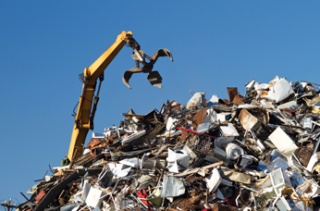For finding metal objects in an image, a popular approach is to use a deep learning model, such as a Convolutional Neural Network (CNN), for object detection. Object detection models, such as YOLO (You Only Look Once) or RetinaNet, can be fine-tuned for detecting metal objects by using annotated images of metal objects as training data.
Certainly, let's expand on the idea of using deep learning models for finding metal objects in images, specifically focusing on the process of fine-tuning popular object detection models like YOLO (You Only Look Once) or RetinaNet for this specific tasks

Object detection is a powerful computer vision technique that not only identifies objects within an image but also provides their precise locations. When applied to the task of finding metal objects, it can greatly enhance safety and security in various domains, including manufacturing, security, and quality control
Deep learning, particularly Convolutional Neural Networks (CNNs), has revolutionized object detection. Models like YOLO and RetinaNet are at the forefront of this technology. They are capable of efficiently processing images and detecting multiple objects with high accuracy
To adapt these models for metal detection, you would initiate a process known as fine-tuning. Fine-tuning involves taking a pre-trained model, such as YOLO or RetinaNet, and training it further using annotated images of metal objects. This process allows the model to specialize in recognizing the characteristics of metal objects.
The success of fine-tuning relies on the availability of high-quality training data. You'd need a diverse dataset of images that contain various types of metal objects, along with accurate annotations that specify the location and class of each metal object within the images. This annotated data is used to teach the model how to recognize metal objects.
Data augmentation techniques can be employed to artificially increase the size of your training dataset. Techniques like rotation, scaling, and adding noise can make the model more robust to variations in real-world images
Implementing a user-friendly interface for operators or security personnel can simplify the interaction with the system. Alerts and notifications can be generated when metal objects are detected.
Depending on the industry, there may be regulatory standards and compliance requirements that the system must adhere to. Ensuring that the system meets these standards is essential.
Implement anomaly detection techniques alongside classification to identify and flag unusual or unknown materials, which can be particularly valuable for quality control.
Establish a feedback loop for model improvement. Gather insights from the sorting process and use them to refine the model continuously.
Remember that the choice of the "best" model can evolve over time as new algorithms and techniques are developed. Regularly reevaluate your approach to ensure it aligns with the latest advancements in the field of machine learning.